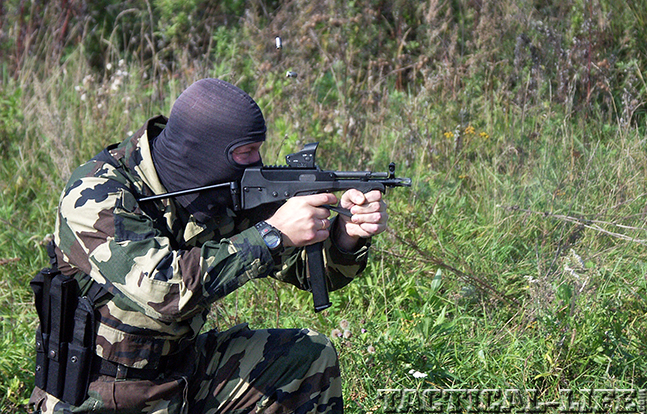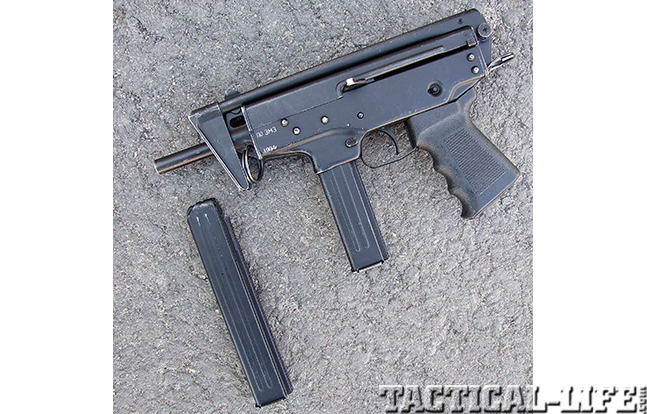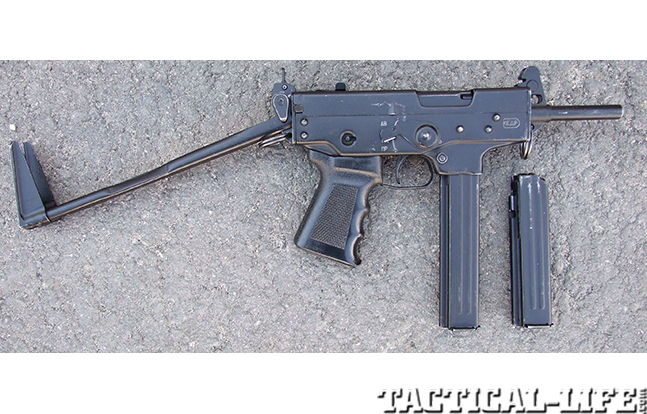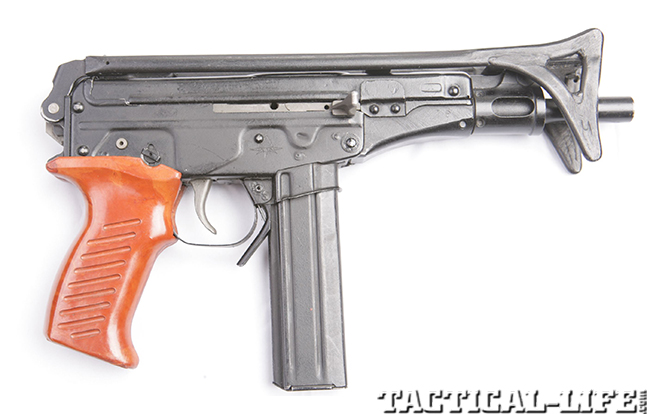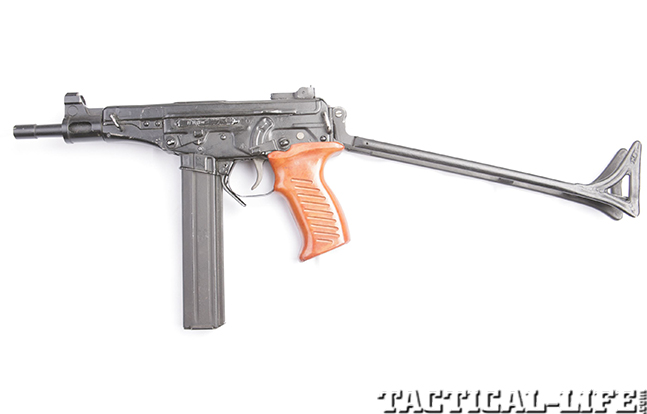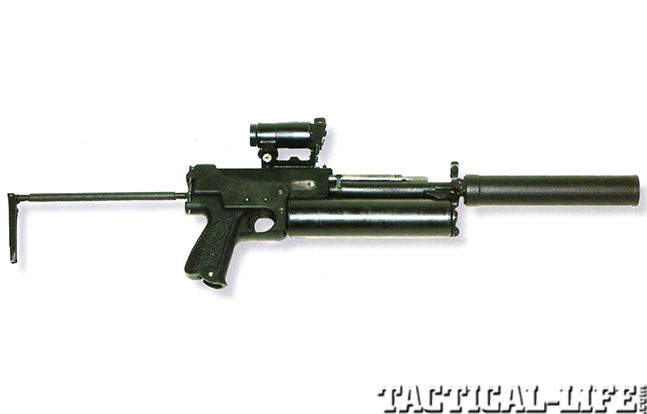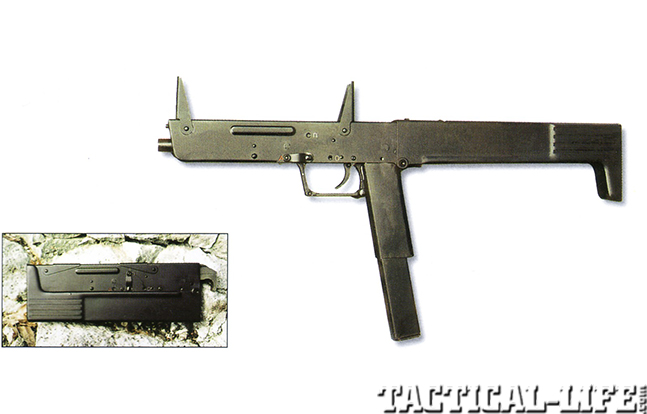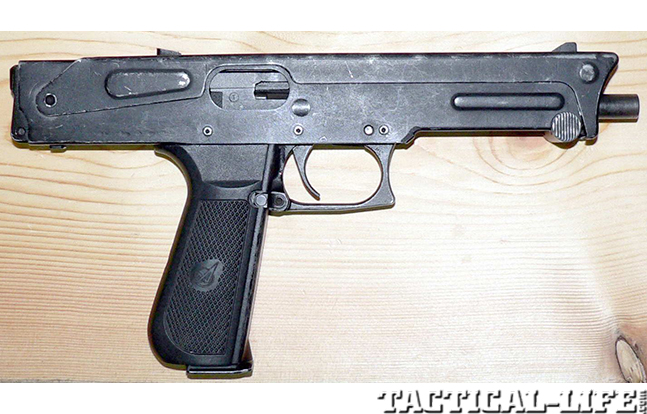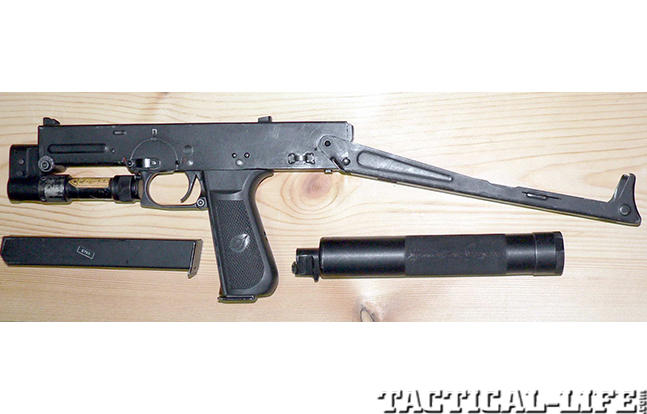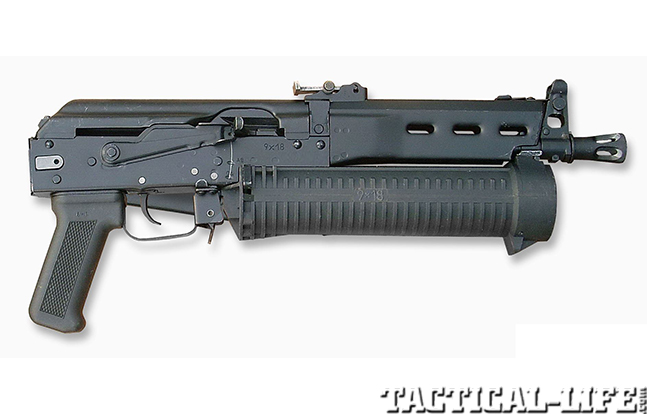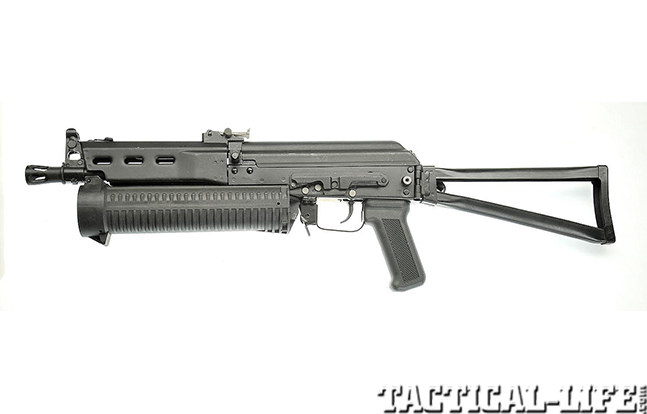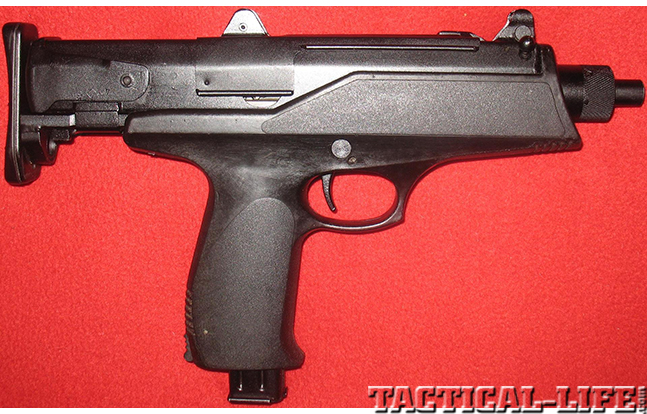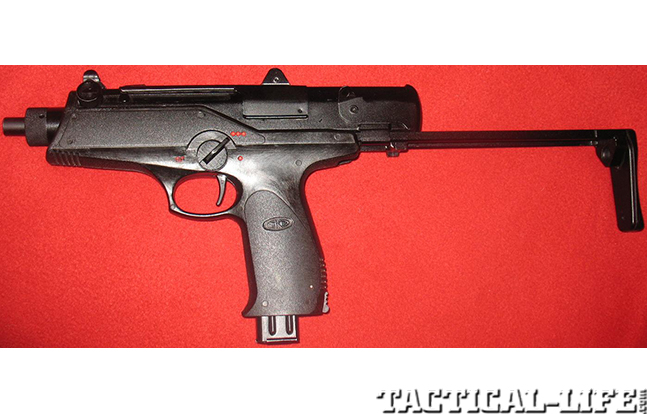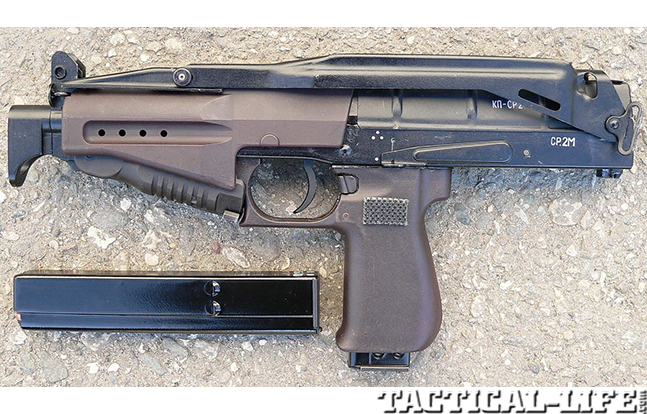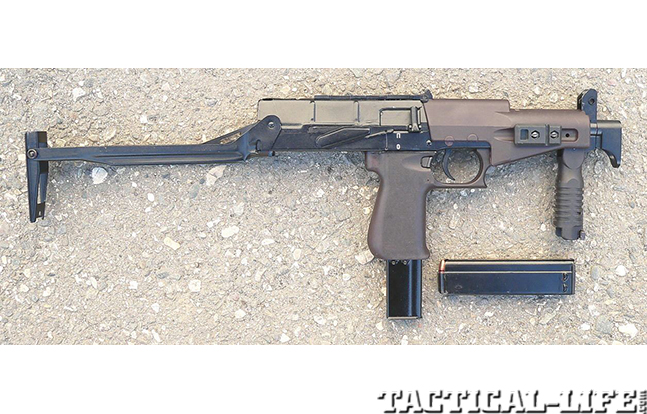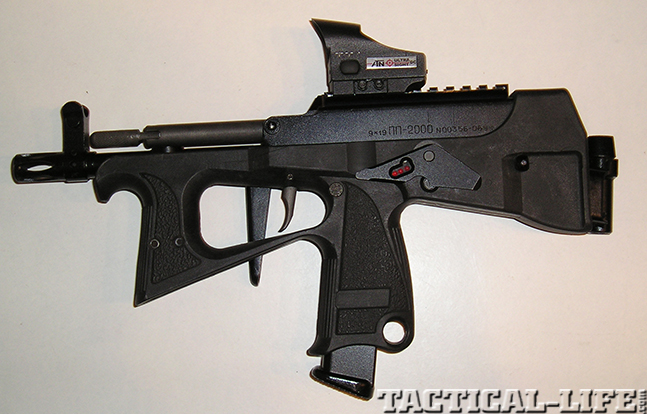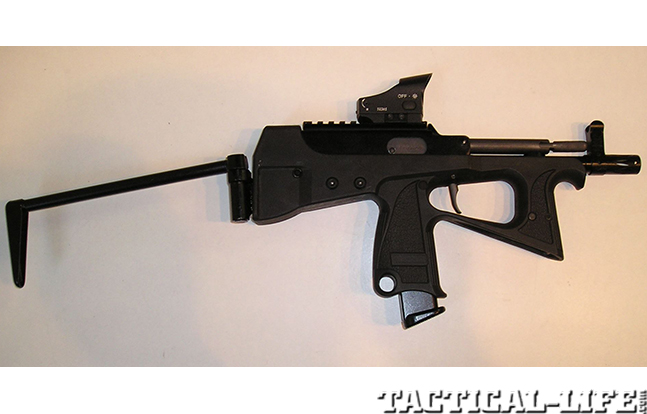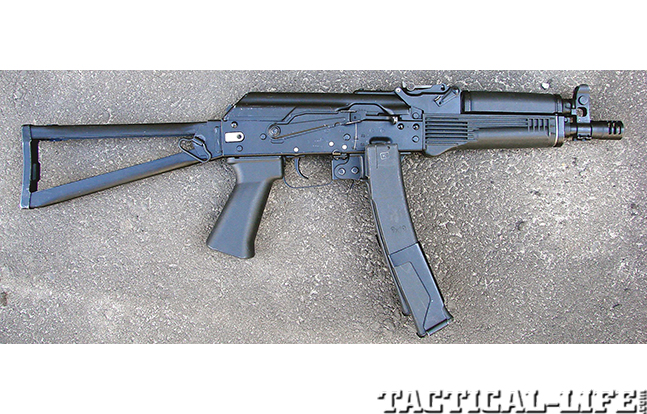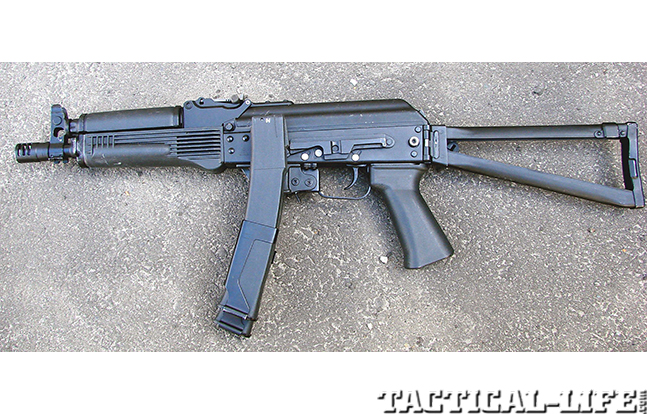Submachine guns (SMG) were among the most widely issued weapons used by Soviet infantry during the World War II. In fact, the Shpagin PPSh-41 SMG became the single most-produced Soviet automatic weapon of the war, with more than 6 million being made. The Sudaev PPS-43 came second, with about 2 million supplied to airborne troops, recon units, tank crews and other frontline personnel who required more compact weapons.
However, as early as 1943, the fate of the military SMG in the U.S.S.R. was sealed, as the Red Army requested that its complete lineup of infantry weapons be chambered for the 7.62x39mm intermediate cartridge. This new ammunition, inspired by the U.S. M1 Carbine and the German MKb 42, offered two to three times the effective range and striking power of the pistol-caliber ammunition used in submachine guns. With general adoption of the SKS carbine and AK assault rifle, both chambered for new 7.62x39mm M43 ammunition, production of the submachine guns in the Soviet Union ceased by early the 1950s and remaining usable machinery was mostly given away to some Communist Bloc countries like Poland, Hungary and China.
In the following decades, there was no place for the pistol-caliber SMGs in the armories of the Soviet Army. A brief attempt was made during the early 1970s to develop a compact, suppressed SMG chambered for 9x18mm Makarov ammunition for Spetsnaz use. Apparently inspired by foreign weapons, such as the American Ingram MAC-10, Czechoslovakian Skorpion vz. 61 and Polish PM-63 RAK, this attempt failed due to overly optimistic requirements set by the military. They wanted Spetsnaz submachine guns to be compact and to fire subsonic 9×18 ammunition, and yet have an effective range of 200 meters, which was (and still is) technically impossible. The Army tested at least two experimental submachine guns designed in Tula by Dragunov and Afansasiev in 1971 before being rejected, both provisionally designated as PP-71s.
Advertisement — Continue Reading Below
Iron Curtain Collapses
The renaissance of the Russian submachine guns came during the early 1990s, as the Soviet Union collapsed and dissipated into a number of newly independent states. This left all of the states, including Russia, in a very bad economic and social situation, and as a result, violent and organized crime skyrocketed along with the rise of domestic separatism and terrorism, especially in the Northern Caucasus region.
Advertisement — Continue Reading Below
Government-approved activities in SMG development recommenced in the now-independent Russia with the resurrection of the two readily available aforementioned PP-71 designs, which had been gathering dust since the early 1970s. The Dragunov weapon, slightly modified, was approved for MVD (Ministry of Internal Affairs) use in 1991 and entered production in 1993 as the PP-91 KEDR.
“Kedr” normally means “cedar tree,” but in this particular case it also means “Konstruktsiya Evgenija Dragunova,” or Yevgeny Dragunov’s design. The Afanasiev gun entered production and service as the OTs-02 “Kiparis” (cypress), with no particular meaning in the codename.
Advertisement — Continue Reading Below
Both weapons are chambered for the widely available 9x18mm Makarov and both are still in use by various law enforcement organizations across Russia.
The early 1990s also saw the development of several new weapons, all intended primarily for law enforcement use. The first of these was the PP-90, developed by the KBP design bureau in Tula, which was obviously patterned after the experimental Ares FMG, a folding gun designed back in the 1980s under guidance of the late Eugene Stoner.
Advertisement — Continue Reading Below
The PP-90 was intended for use by plainclothes law enforcement and security personnel, but it turned out to be problematic in regards to ergonomics and safety, and its “field use” was very limited. A second weapon from the same design bureau, the PP-93, proved to be somewhat more successful.
The PP-93 was a more or less conventional weapon, firing the same 9x18mm ammunition and capable of mounting a suppressor and a laser aiming module. It is still in limited use by various law enforcement units in Russia.
Advertisement — Continue Reading Below
The mid-1990s saw the appearance of several other designs, such as the Izhevsk-made PP-19 Bizon (Bison) and Kovrov-made AEK-919.
The Bizon had been developed at the famous IZHMASH state arms factory during the early 1990s and first appeared in public around 1993.
Advertisement — Continue Reading Below
Obviously influenced by the rather unsuccessful Calico SMGs, the Bizon combined a high-capacity “helical” magazine with a more conventional appearance and layout. The gun was based on the AKS-74U compact assault rifle and was actually built on shortened AKS-74U receivers, with an AKS-74U pistol grip, trigger unit and folding buttstock. Later models featured pistol grips with a somewhat improved shape and better ergonomics. The large-capacity helical drum magazine is located under the barrel and serves as a forearm, resulting in a comfortable hold and a trim profile. This firearm is said to be comfortable to carry and fire, and provides a lot of firepower. Also, thanks to its closed-bolt firing mode and its hammer-fired control module, the PP-19 provides accurate semi-automatic fire. The controls are similar to those on all Kalashnikov assault rifles, thus it’s familiar for all Russian troops. Initially produced for 9x18mm Makarov ammunition, the Bizon latter appeared chambered for the 9x19mm. Bizon guns in 9x18mm are in limited production and use with Russian security and law enforcement forces, and 9x19mm versions are offered for export.
The AEK-919 was developed at the Kovrov Mechanical Plant (KMZ) in the mid-1990s for the Russian Army and special law enforcement forces.
Advertisement — Continue Reading Below
The initial design of the AEK-919 was based on the Austrian Steyr MPi-69 and was not without certain flaws. After initial testing, the design was improved—the overall length was decreased, the crossbolt safety switch was replaced by a rotating fire selector/safety switch, and the ergonomics were also improved. The resulting design was named AEK-919K “Kashtan” and put into limited production, which ceased in 2006 when KMZ closed all of its weapon-related production and switched to the manufacture of civilian products. Few AEK-919K are still in use with various law enforcement units across Russia, but the lack of spare parts and factory support is causing its numbers to decrease slowly but steadily.
New Program
Advertisement — Continue Reading Below
A new military handgun program, conducted initially in the U.S.S.R. and later in Russia from the late 1980s under the codename “Grach” (Rook), gave rise to a requirement for a more potent pistol round to replace the old 9x18mm ammunition. This program, which culminated in 2000 with the adoption of a “+P+” version of the world’s standard 9x19mm Luger ammunition loaded with AP bullets, and with several new pistols to fire it, also produced two alternative rounds—the abortive 9×18 “PM Modified” (PMM), which was built using a standard 9x18mm case with a hotter loading and a lighter bullet, and a completely new 9x21mm RG-054 round, which evolved into a family of pistol/SMG rounds.
The 9x21mm ammunition, which was initially dropped from the military trials under the Grach program, was later picked up and sponsored by the Russian FSB (Federal Security Service), which eventually adopted this caliber along with the powerful SR-1 Vector pistol, developed by the TSNII TochMash research institute in the city of Klimovsk. Later on, the same organization developed an SMG for this round, which is available in ball, tracer, expanding and AP loadings. To ensure reliable functioning with high-pressure 9x21mm ammunition, the new SR-2 Veresk SMG was designed with a gas-operated, locked-breech rotary bolt action.
Originally intended for elite FSB and FSO (Executive Protection service) units, the modified SR-2M SMG is now also in limited use by several specialized police units across Russia.
9x19mm Luger
The official adoption of the 9x19mm Luger ammunition as the next standard handgun chambering for the Russian military and police forces also resulted in several new weapons. The first to be mentioned is the PP-90M1, designed during the late 1990s and early 2000s at the Tula KBP organization. It is not known why it was assigned such a confusing designation, as it bears almost no relation to the 9x18mm PP-90/PP-90M folding gun also designed by KBP. The PP-90M1 was designed as a patrol weapon for police use as well as for Army Spetsnaz use for CQB scenarios, to compete in this role with 5.45x39mm AKS-74U compact assault rifles and PP-19 Bizon SMGs. Originally it was offered in a dual, convertible feed configuration, using either a helical drum magazine with a 64-round capacity or a 32-round box magazine (with a special adaptor). Production versions dispensed with the box magazine adaptors and are now offered only with helical magazines. So far only limited sales of the PP-90M1 have been reported, mostly to several of the former Soviet republics such as Belarus and Kazakhstan.
At about the same time, KBP also developed another SMG of more compact appearance, known as the PP-2000.
Designed to handle very-hot-loaded 9x19mm 7N31 AP ammunition, the PP-2000 can also fire all standard types of ammunition in the same caliber. It is built with the magazine-in-the-grip configuration, and early prototypes were designed to use a spare box magazine as a rudimentary shoulder stock. Current production models of the PP-2000, which are now in use by various police units across Russia, are issued with more conventional (and slightly more comfortable) side-folding shoulder stocks.
The Izhmash factory, following requests from the elite Vityaz counterterrorism unit, redesigned its PP-19 Bizon to fire the new 9x19mm service ammunition and to use more conventional plastic box magazines, designating the new weapon PP-19-01 Vityaz after its originators.
The PP-19-01 Vityaz weapon now is in full production (unlike the original PP-19 Bizon), and is widely used by various law enforcement units across the country. It is also offered for export, with reported sales to some South American counties.
